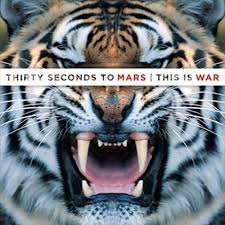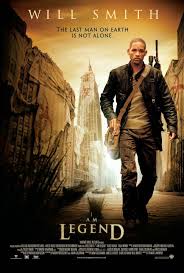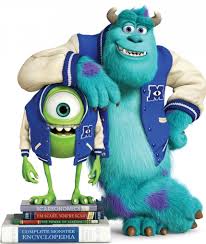Mr Ford - Representation of Skins (Season 1, Episode 1)
Tony:
Tony isn't the average teenage boy (16/17), the average teenage lad you expect to be very messy and not organised at all. Tony is the opposite in his bedroom everything was tidy: his clothing drawers were very neat and tidy this could have been a link to him possibly having OCD or his mum tidies them. Tony looks out for his sister, we notice this when Tony see's her out of the window then turns up his music to allow her to get into her bedroom without being heard by her dad. I think this is the opposite to real life, because most teenage lads wind up their sister and would most likely get them in trouble at this point.Tony has a bit of an attitude that follows with cheekiness. I've noticed his attitude in his voice when his dad runs into his bedroom and the cheekiness/naughty when he purposely locks the door and climbs out of the window to annoy his dad. The conflict between Tony and his father gives me the impression he defiantly enjoys irritating his father. Tony could have an interest in a mix of sexuality, this is because he sleeps directly in between the male and female figures on his bed covers. Tony has two posters on his walls of films including: 8 & a half and Blow Up. These posters are films from the 60's and Italian this tells us his interest which is older films. Tony also has a reasonable sized bedroom and a very new looking stereo, this gives us the impression his parents are wealthy.
Tony's Dad:
Tony s Dad character is played by Harry Enfield. Tonys dad is made out to be a bit of a mug/stupid in the program, this is due to the amount of things the teenagers are getting away with, such as: Tony s sister arriving home from a night out and Tony climbing out of bathroom window. This will interest the audience because they will find the parents being made a fool of quite entertaining. We get to know his dad as quite short tempered in the first five minutes because we see him shouting and getting angry about the music being to loud quickly and him getting angry when he notices Tony downstairs later in the scene. Tony's dad mostly swears which the teenage audience would enjoy and find entertaining, he also uses acts of slang wording such as 'James Blunt'. The stereo type of Tony's dad is that he is a bit of a pub drinker, he looks like the typical man you see drinking down a pub, watching the football.
Camera Shots and Angles:
During the first clip in Tony's bedroom the camera in on an extreme close up of Tony's eyes, which then zooms out to reveal a wide shot/high angle of him in his bed. A mid shot plus close up is then used to show him working out, this then stops and changes angle/clip to a high angle watching over him while he is carrying out his press ups in bedroom. A panning shot is then used to record Tony's Sister walking up the road, this shot also includes an overall picture of what the environment they live in is like. A high angle is then used to show Tony's sister from where he is standing (bedroom window). The camera then switched to a low angle to see Tony standing in his bedroom looking from sisters view point (outside on ground level). A close up is then used to show what Tony's sister looks like after a night out partying while she's sitting down in her room. An extreme close up is then used to show the anger in Tonys Dad when he is shouting. A wide angle is then used to show what Tony's sisters room is like (messy, what you expect a typical boys room to be like). A close up is used to show Tony's sister doing up the tie (getting ready for school). A tracking shot and wide angle is used to follow Tony climbing down the wall of his house and see the scenery of his house. An over shoulder shot is also used to look at the women across the road from his point of view (making us the audience feel like we're his eyes).
Sounds:
Non digetic music is played at the start of the first scene (looking down at Tony plus him working out) because there isn't any other sounds to be heard and the music which is playing is hip-hop/rap which will interest the audience. This music then stops playing when his sister comes to the window sight because Tony then plays his own music which is then digetic because if you were in the scene you would be able to hear it. Digetic sounds are then used by Tony's Dad which is his voice shouting at Tony in the background of the digetic music.
Tony isn't the average teenage boy (16/17), the average teenage lad you expect to be very messy and not organised at all. Tony is the opposite in his bedroom everything was tidy: his clothing drawers were very neat and tidy this could have been a link to him possibly having OCD or his mum tidies them. Tony looks out for his sister, we notice this when Tony see's her out of the window then turns up his music to allow her to get into her bedroom without being heard by her dad. I think this is the opposite to real life, because most teenage lads wind up their sister and would most likely get them in trouble at this point.Tony has a bit of an attitude that follows with cheekiness. I've noticed his attitude in his voice when his dad runs into his bedroom and the cheekiness/naughty when he purposely locks the door and climbs out of the window to annoy his dad. The conflict between Tony and his father gives me the impression he defiantly enjoys irritating his father. Tony could have an interest in a mix of sexuality, this is because he sleeps directly in between the male and female figures on his bed covers. Tony has two posters on his walls of films including: 8 & a half and Blow Up. These posters are films from the 60's and Italian this tells us his interest which is older films. Tony also has a reasonable sized bedroom and a very new looking stereo, this gives us the impression his parents are wealthy.
Tony's Dad:
Tony s Dad character is played by Harry Enfield. Tonys dad is made out to be a bit of a mug/stupid in the program, this is due to the amount of things the teenagers are getting away with, such as: Tony s sister arriving home from a night out and Tony climbing out of bathroom window. This will interest the audience because they will find the parents being made a fool of quite entertaining. We get to know his dad as quite short tempered in the first five minutes because we see him shouting and getting angry about the music being to loud quickly and him getting angry when he notices Tony downstairs later in the scene. Tony's dad mostly swears which the teenage audience would enjoy and find entertaining, he also uses acts of slang wording such as 'James Blunt'. The stereo type of Tony's dad is that he is a bit of a pub drinker, he looks like the typical man you see drinking down a pub, watching the football.
Camera Shots and Angles:
During the first clip in Tony's bedroom the camera in on an extreme close up of Tony's eyes, which then zooms out to reveal a wide shot/high angle of him in his bed. A mid shot plus close up is then used to show him working out, this then stops and changes angle/clip to a high angle watching over him while he is carrying out his press ups in bedroom. A panning shot is then used to record Tony's Sister walking up the road, this shot also includes an overall picture of what the environment they live in is like. A high angle is then used to show Tony's sister from where he is standing (bedroom window). The camera then switched to a low angle to see Tony standing in his bedroom looking from sisters view point (outside on ground level). A close up is then used to show what Tony's sister looks like after a night out partying while she's sitting down in her room. An extreme close up is then used to show the anger in Tonys Dad when he is shouting. A wide angle is then used to show what Tony's sisters room is like (messy, what you expect a typical boys room to be like). A close up is used to show Tony's sister doing up the tie (getting ready for school). A tracking shot and wide angle is used to follow Tony climbing down the wall of his house and see the scenery of his house. An over shoulder shot is also used to look at the women across the road from his point of view (making us the audience feel like we're his eyes).
Sounds:
Non digetic music is played at the start of the first scene (looking down at Tony plus him working out) because there isn't any other sounds to be heard and the music which is playing is hip-hop/rap which will interest the audience. This music then stops playing when his sister comes to the window sight because Tony then plays his own music which is then digetic because if you were in the scene you would be able to hear it. Digetic sounds are then used by Tony's Dad which is his voice shouting at Tony in the background of the digetic music.






